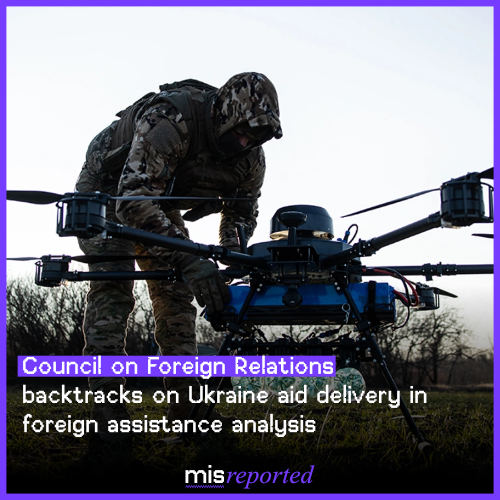Council on Foreign Relations backtracks on Ukraine aid delivery in foreign assistance analysis
The Council on Foreign Relations (CFR) has amended its reporting after mischaracterizing how much of the vast U.S. aid package to Ukraine has actually been delivered.
In its widely circulated explainer, “Here’s How Much Aid the United States Has Sent Ukraine,” CFR originally presented the $175 billion approved by Congress as though it had already reached Ukrainian hands. The March 11 correction clarified that while most of this funding has been allocated, much of it is still in the pipeline, with significant portions earmarked for U.S.-based defense production and replenishment of American stockpiles.
The think tank had leaned on the headline number to illustrate the unprecedented scale of U.S. support since Russia’s invasion in 2022, framing it as comparable to Marshall Plan levels of commitment. But by blurring the line between appropriations and disbursements, CFR overstated Ukraine’s immediate access to the resources, presenting a picture of full delivery that does not reflect the more complex reality of aid distribution.
The issue is not merely technical. The distinction between funds being authorized, allocated, and physically delivered carries real political weight, particularly in a climate where President Trump’s administration has repeatedly frozen and restarted weapons transfers, and where lawmakers are fiercely debating whether aid is reaching Ukraine quickly enough.
CFR’s clarification acknowledges that the earlier framing may have amplified perceptions of U.S. involvement beyond what has yet materialized. In an environment where both supporters and critics of Ukraine aid are scrutinizing every dollar, portraying commitment as delivery risks skewing the debate and stoking unnecessary alarm about oversight, accountability, and the pace of support.


